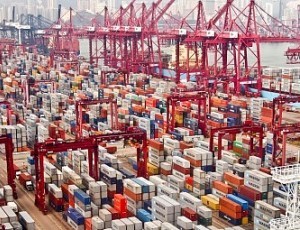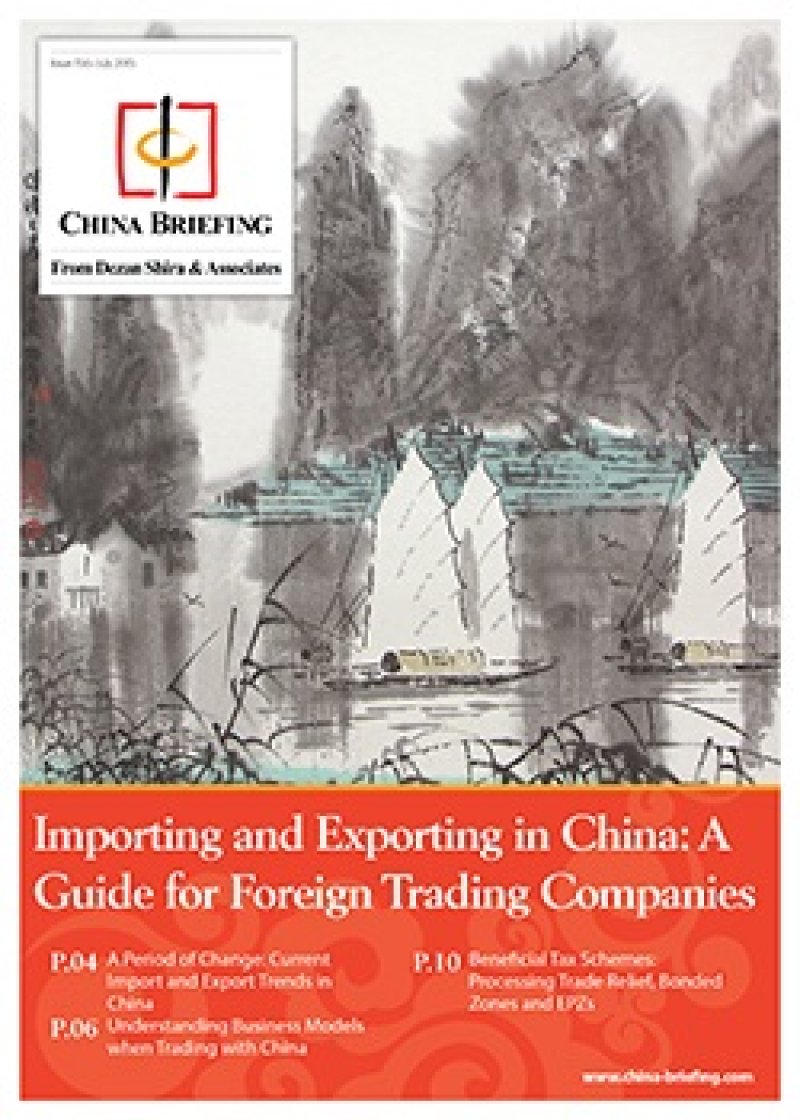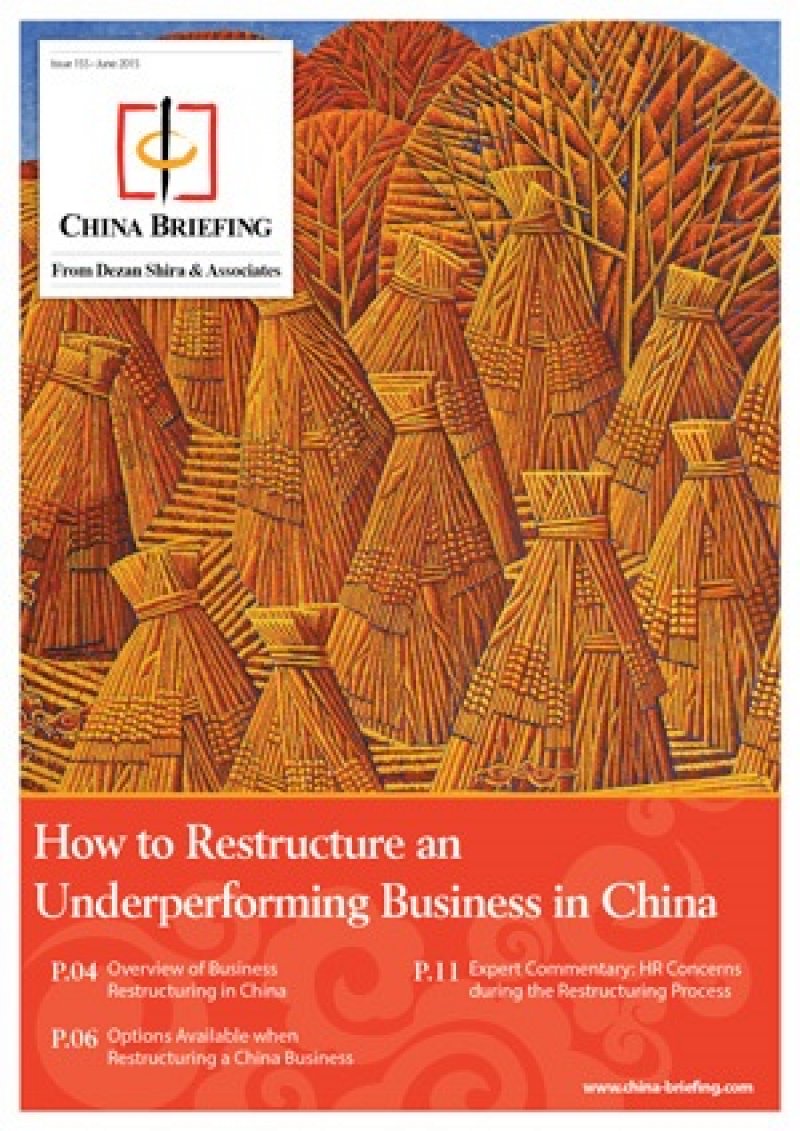A Closer Look at China’s Free Trade Zones – Part I
When the Shanghai Free Trade Zone (FTZ) was first introduced in 2013, it was presented as a testing ground for new reforms. Where proven successful, these would be expanded across the entire country. In this way, we have seen the easing of restrictions on foreign currency exchange and foreign participation in China’s e-commerce sector – both originally FTZ pilot schemes – implemented nationwide.
Other key aspects include the negative list, which states exhaustively in which sectors foreign investment is restricted; and the faster company registration process. Both concepts are gradually being implemented across the rest of China.
Many major cities are now conducting trial programs where company registration can be completed online or only require a visit to one location, or where the business license now also covers tax registration and the enterprise code. The Foreign Investment Law, of which the first draft was made available for public comment in January 2015, would take the concept of a negative list for foreign investment nationwide. As of yet, there is however no news on the progress of the Foreign Investment Law.
Three new Free Trade Zones were opened in April 2015. When these were announced, it was added that they would share many of the features that the Shanghai FTZ had. The now four FTZs share the same negative list, have the same accelerated company registration procedure and have many more features in common. Some new measures have been introduced in each of the zones since their inception, the more salient ones opening up industries to investors from either Taiwan (Fujian) or Hong Kong and Macau (Guangdong). This has left many foreign investors wondering what the differences between the new FTZs are – and more importantly – whether to set up in one.
The goal of the new FTZs becomes apparent when looking at the policy documents for each of them. Rather than being a testing ground for nationwide reform, these three new zones are intended to drive regional growth by encouraging selected industries to cluster in that area. This is best understood by examining the various sectors that are encouraged in each zone.
Guangdong – Financial sector
The financial sector is a good example to illustrate the differences between the four zones. Each FTZ policy package comes with a large section on finance. The policy documents of all four are filled with references to RMB internationalization. But there are differences.
Where Shanghai is very much intended to become a global financial center, the plan for the Guangdong FTZ steers the province towards a more regional role, integrating with Hong Kong.
Hong Kong has by far the world’s largest pool of offshore RMB. With the new Guangdong FTZ, Hong Kong banks are now able to set up branches in the zone and make RMB loans to mainland companies in the zone. As such, 90 percent of the companies currently registered in the Guangdong FTZ are local companies wanting to obtain the better finance options from Hong Kong. To a lesser extent this holds true for Macau as well, which is given the same preferential treatment as Hong Kong.
One of the policy objectives of the Guangdong FTZ is to enable mainland companies registered in the zone to list RMB denominated shares and debt instruments on the Hong Kong stock exchange. Similarly, Hong Kong companies incorporated in the zone would be able to list on mainland exchanges. These and a number of other measures are intended to pave the way to further internationalization of the RMB. This is very much a gradual process. The further financial integration between Hong Kong, Macau and the Guangdong FTZ is one of the carefully controlled experiments along that path.
![]() RELATED: Shanghai-Hong Kong Stock Connect to Launch
RELATED: Shanghai-Hong Kong Stock Connect to Launch
In this way, each of the FTZs presents a channel through which the central government can gradually ease its capital restrictions. We shall discuss these further below.
Guangdong – Shipping, trading and related finance
Specific to the Guangdong FTZ is the focus on shipping. Since its creation, a special FTZ Customs division has implemented a number of new Customs clearing procedures. One of these is the so-called ‘two-line’ mechanism, where goods are brought into the zone immediately and given a brief check. Only when they leave the zone is there a stricter Customs inspection and quarantine. This and other measures have significantly brought down the time involved in shipping goods in and out of the country. As such, the Guangdong FTZ has become tremendously popular with Chinese e-commerce companies, to whom delivery times are a top priority.
The Guangdong FTZ is comprised of three sections: Hengqin in Zhuhai (opposite Macau), Qianhai and Shekou in Shenzhen (opposite Hong Kong) and Nansha in Guangzhou. Part of each of these sections is a bonded zone. Bonded zones are treated as being outside of the Chinese Customs area.
![]() RELATED: Importing and Exporting in China: A Guide for Foreign Trading Companies
RELATED: Importing and Exporting in China: A Guide for Foreign Trading Companies
This means that when goods enter the zone from abroad, no import taxes are levied until these are brought out of the zone into China. Sellers to the zone receive a VAT export rebate, and transactions between companies in the zone are not subject to VAT. This offers tax savings to companies in the same supply chain that are both in a bonded zone. One of the policy plans for the Guangdong FTZ is to have joint Customs supervision over the three sections, thus allowing companies to transact with companies in other parts of the zone as if it were one.
The zone also encourages the establishment of various trading platforms. As such, recent months have seen a large number of these companies move into one of the three sections of the zone. The Hengqin section (located in the city of Zhuhai, next to Macau) for example has a trading platform for intellectual property rights, flowers, pearls and precious stones. It is also home to the only trading platform for state-owned assets.
The Nansha section in the city of Guangzhou has more of a tie-in with the industrial heartland of the Pearl River Delta. Here, trading platforms have sprung up for carbon emission rights, petrochemical products and rare earths; but also for shipping finance, air cargo and shipping. One of the very few activities that the Guangdong FTZ has uniquely opened up to foreign investment is international shipping brokerage.
Conclusion
Like the Shanghai FTZ, the new regional FTZs come with a negative list, faster company set-up, and liberalized foreign exchange regulations. What distinguishes each zone from the next is the regional industrial agglomeration each is intended to create. While in terms of policies the new FTZs may not bring much new, the biggest opportunity for foreign investors may in fact lie in the concentration of industries, and the benefits their presence offers.
In the next part of this series, we will explore the regional aspects of the Fujian and Tianjin Free Trade Zones.
|
Asia Briefing Ltd. is a subsidiary of Dezan Shira & Associates. Dezan Shira is a specialist foreign direct investment practice, providing corporate establishment, business advisory, tax advisory and compliance, accounting, payroll, due diligence and financial review services to multinationals investing in China, Hong Kong, India, Vietnam, Singapore and the rest of ASEAN. For further information, please email china@dezshira.com or visit www.dezshira.com. Stay up to date with the latest business and investment trends in Asia by subscribing to our complimentary update service featuring news, commentary and regulatory insight. |
![]()
Importing and Exporting in China: a Guide for Trading Companies
In this issue of China Briefing, we discuss the latest import and export trends in China, and analyze the ways in which a foreign company in China can properly prepare for the import/export process. With import taxes and duties adding a significant cost burden, we explain how this system works in China, and highlight some of the tax incentives that the Chinese government has put in place to help stimulate trade.
How to Restructure an Underperforming Business in China
In this issue of China Briefing magazine, we explore the options that are available to foreign firms looking to restructure or close their operations in China. We begin with an overview of what restructuring an unprofitable business in China might entail, and then take an in-depth look at the way in which a foreign company can go about the restructuring process. Finally, we highlight some of the key HR concerns associated with restructuring a China business.
 Revisiting the Shanghai Free Trade Zone: A Year of Reforms
Revisiting the Shanghai Free Trade Zone: A Year of Reforms
In this issue of China Briefing, we revisit the Shanghai FTZ and its preferential environment for foreign investment. In the first three articles, we highlight the many changes that have been introduced in the Zone’s first year of operations, including the 2014 Revised Negative List, as well as new measures relating to alternative dispute resolution, cash pooling, and logistics. Lastly, we include a case study of a foreign company successfully utilizing the Shanghai FTZ to access the Outbound Tourism Industry.
- Previous Article China Outbound: Low Operational Costs Turn ASEAN into Preferred Destination for Businesses Relocating From China
- Next Article Zhongshan: China’s Upgrading Manufacturing Base












